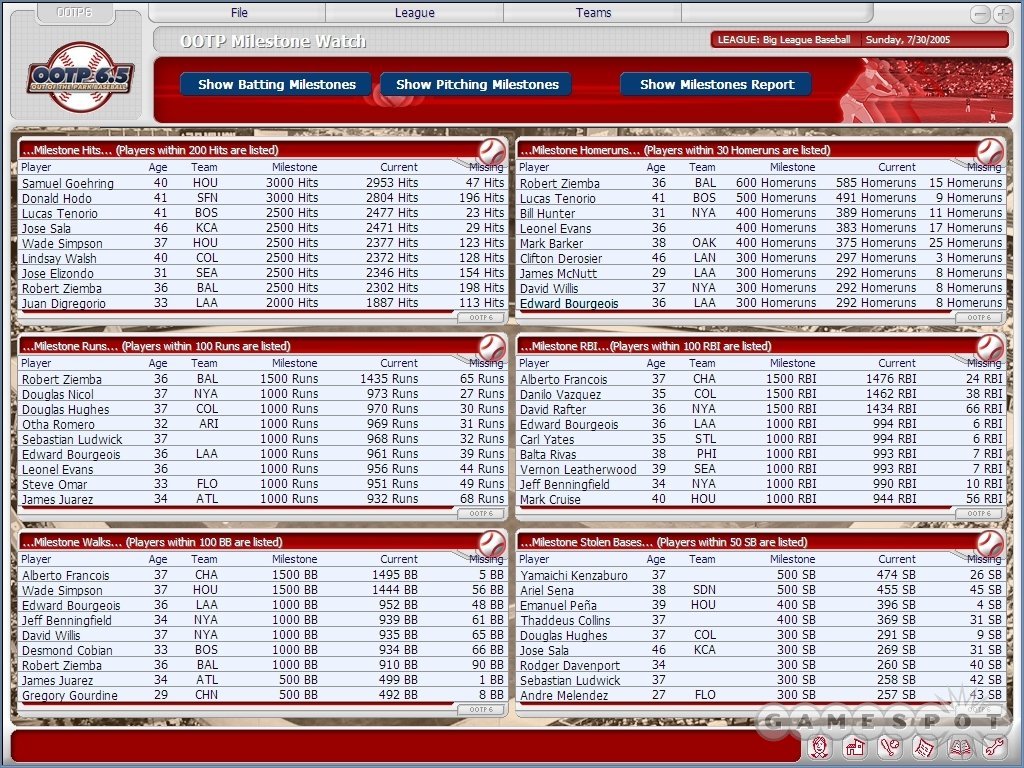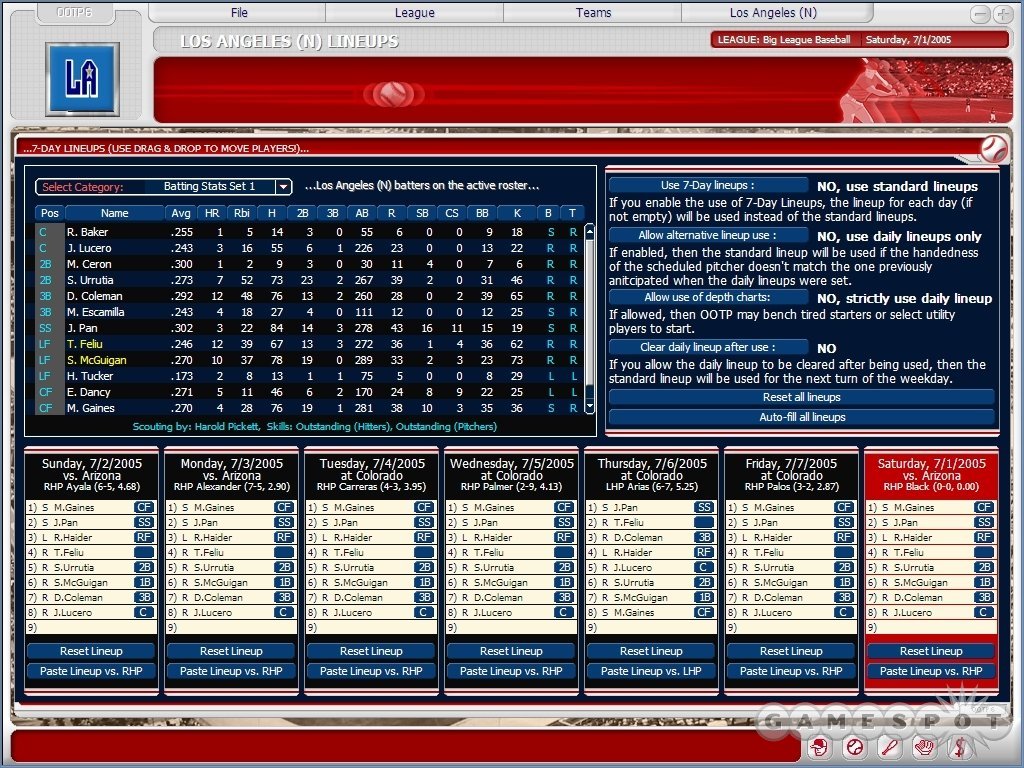Surprises don't come much better than this. Hardball nuts expecting to wait until next year for a new installment in designer Markus Heinsohn's Out of the Park Baseball series received a pre-All Star Break treat with the release of OOTP 6.5, an expansion pack that adds a whopping 47 new features to the already outstanding OOTP 6. This version is more of a solid, stand-up double than a home run, as most of the changes are fairly subtle. Although, the sheer volume of the many good tweaks and additions provide greater depth to gameplay.

Basically, OOTP 6.5 is OOTP 6 on steroids. The expansion incorporates new features in every area of the game, ranging from upgraded artificial intelligence that lets computer managers more astutely oversee rosters to screens that track league milestones and projected statistics. None of the new options are particularly showstopping, or enough to change the complexion of the original game, although all combine to create a baseball experience that brings players a few steps closer to the big leagues.
Most of these accoutrements are hard to even take notice of at first, but after a season or two of simmed games it's hard to imagine how you ever got along without them. A case in point is the new seven-day roster option that lets you set your lineup for an entire week of action, game by game. At first, it seems like just a handy frill. But after a little bit of playing in an online league that runs week-long sims, or even playing in a solo league and simming a week at a time, it becomes awfully necessary to be able to set rosters for upcoming contests. The feature also allows more control over your lineup, while you're still able to zip through seasons, simulating a week at a time.
Other expansion features beef up the reality of solo play by tweaking the AI. Computer-controlled teams have a short-term focus that governs how they approach deals. A winning club at the July trade deadline is now likely to go for it all by dishing out prospects for established players who can help with a play-off run right away. Conversely, a team mired at the bottom of its division holds onto its young potential stars while dumping its big-buck talent on more successful rivals. This, plus the tweaking of the computer's AI when it comes to setting lineups and depth charts, improves the authenticity of solo play. It's still not quite like playing in an online league against other human managers, but at least now you get the impression that computer managers are aware of what's going on during each season. They seem to know where their teams are in the standings, which trades make the most sense depending on win-loss records, who's performing well enough to hit cleanup every day, and so forth.
Even the general public seems mindful of what's going on in league play. Team popularity, formerly a somewhat arcane stat apparently based on on-field performance and ticket pricing, now factors in roster moves. Players now have local and national popularity ratings, so the fans react negatively if you deal away a hometown hero and positively if you bring in a superstar. The swing in attendance can be quite dramatic, too, especially if you're dealing away top players during a losing season. This can start a downward popularity spiral that's nearly impossible to stop, as fewer bums in the seats drop revenue, which reduces your ability to buy free agents, which, in turn, kills your ability to compete on the field without going through a full-blown rebuilding mode. Hello, Montreal Expos.
Still, for the most part, this is the same addictive formula that powered the original OOTP 6, accompanied by some nifty frills that enhance both usability and the level of detail. That's good, right? Not entirely. For all of its good points, this expansion also spotlights how dated the game engine now seems. The look and feel go all the way back to OOTP 5, and a lot of progress has been made in sports-sim design since that game was released in early 2003. There are just too many odd design quirks, and too many occasions where you have to click through two or three menus to access information.

Some of this awkwardness should have been fixed for this expansion. It's hard to understand why the developer would have addressed such demands as a seven-day roster planner yet neglected to include such conveniences as the option to go directly to the team e-mail screen when an incoming letter interrupts simulating game results, or go directly to the team roster screen when simming is halted by an injury. You get the picture. Little interface tweaks like this would have made the game much more user-friendly. As would faster sim times. Taking a minute or more to get through a week of simulated games remains the Achilles' heel of this series. OOTP 6.5 actually seems like a step backward when it comes to speed, with lots of pauses during simulations, at the conclusion of seasons, and when the computer is "thinking" about trades.
But one gets the sense that Heinsohn is aware of all this. OOTP 6.5 is obviously a stopgap release intended to maintain fan interest in this great baseball-management series, while the designer and its new partners at Sports Interactive (creators of the legendary Championship Manager series of soccer sims) put the finishing touches on the all-new OOTP 7, scheduled for release in time for spring training in 2006. While this expansion is a worthwhile addition to an already great game, and the $9.95 price is certainly right, you still come away a little disappointed due to the absence of upgrades with more impact than AI tweaks and interface amenities.